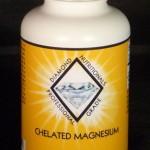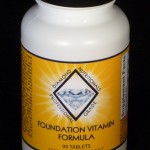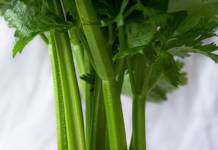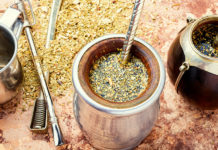It can be quite difficult to nail down the cause of a persistent headache or migraine.
Some of the most common headache triggers include vision strain, lack of sleep, stress and varying amounts or type of light. However, you might not have considered another possible cause of your headaches or migraines — your dietary habits and food choices.
The precise relationship between what you eat and the headaches you have isn’t always immediate, and it may take a bit of attention to figure out. With some careful observation of patterns, you should be able to determine if certain foods are triggering your headaches. Other eating habits may play a role too, like skipping meals, or eating too much or too little.
Even if a food isn’t widely considered a headache trigger, your specific diet often plays a role. If you notice a link between a certain snack and pain, it could be worth eliminating that item from your diet. Still, certain foods are more likely than others to lead to headaches.
Here are some of the most likely culprits.
Foods That Contain Tyramine
It could be that you have never heard of tyramine, but you’ve almost certainly ingested it. Tyramine occurs naturally in aged and fermented foods. It’s one of the most commonly recognized food-based migraine triggers.
One of the most familiar types of food that includes tyramine is aged cheese, like blue cheese, aged cheddar, parmesan, Gouda or Swiss.
Processed meats, cured meats and smoked meats also tend to be high in tyramine. Think hot dogs, bacon, lunch meat, salami and pepperoni.
Other fermented and aged foods that include high levels of tyramine include olives, pickles, sauerkraut, cultured dairy products such as yogurt, and certain beans and nuts. For a full list of high-tyramine foods, check out this page from the Mayo Clinic.
Foods That Contain Additives
Research has found that certain food additives also have a link to migraines.
MSG, or monosodium glutamate, is often used in fast food and carryout as a flavor enhancer. It is also found in some canned or packaged foods. The FDA requires that food manufacturers list MSG on the label if the food includes it. The link between MSG and headaches has eluded researchers, but many people report adverse reactions when they eat it.
Another category of headache inducers are nitrates and nitrites. These compounds occur naturally, both in the body and in other organic substances. Manufacturers also add these to foods as preservatives or to add color. Foods that often contain nitrates and nitrites include bacon, sausage and other processed meats.
Other additives that have been linked to headaches include aspartame, an artificial sweetener marketed as NutraSweet or Equal, and yellow #6, a commonly used food dye.
Certain Drugs
While drugs are not a food, they remain some of the most common headache triggers which can be ingested. Carefully read the side effects for any medication or supplement you’re taking and monitor any physical effects.
And don’t forget the most commonly used drugs – alcohol and caffeine may be the most reported headache culprits of all.
Caffeine can cause withdrawal headaches if you drastically change the amount you’re used to or quit “cold turkey.” And caffeine can even trigger a headache completely on its own if you happen to have a sensitivity to it.
Alcohol, of course, can cause hangovers when you’ve over-indulged — a common symptom of which is a headache. Alcohol also increases blood to flow to your head, which can provoke headaches in some people.
Both caffeine and alcohol may lead to dehydration, which itself can cause headaches.
Too Much or Too Little Food
I recommend keeping your blood sugar on an even keel throughout the day. Some ways to help you do that include:
- Making sure to eat regularly at the same times each day
- Taking in moderate amounts at each meal
- Drinking plenty of purified water
- And ensuring you stick to a well-balanced diet.
In general, these are some of the best preventative measures to keep you healthy and headache-free. However, if you’re concerned that a certain food is causing your headaches, start tracking what you eat. Consider using a phone app or a paper journal to record everything you consume, along with the details of your headaches. Here’s a quick template from NIH which you can print out and use to track your daily intake.
Natural Headache Remedies
While certain foods may often be the cause of severe headaches, you may find relief with some of the following natural remedies:
- B-complex vitamins: vitamin B deficiency may lead to tension headaches
- Epsom salt bath: this inexpensive salt can be added to your bathwater to help soothe your muscles and ease your headache
- Cayenne pepper: acts as a pain-reliever by desensitizing nerve endings
- Magnesium: many individual’s headaches are relieved when this common mineral deficiency is corrected
- Essential oils: lavender oil and peppermint oil can work to calm you and numb the pain
- Drink lots of water! Always stay hydrated
Next time you experience a painful headache, try to notice a pattern in your diet. Once you locate the possible food source, start avoiding the food immediately. Then try reintroducing it to your diet. If the headaches resume, you’ll have found the culprit!
A TIME-TESTED SUPPLEMENT PROGRAM TO ELIMINATE OR REDUCE HEADACHES!
So, you have reached a point where you have eliminated possible headache triggers as best you can….but you still have headaches!
Here’s a supplement program which has helped many of my patients over the years:
1.) Diamond Nutritionals’ Chelated Magnesium.  The proper dose, form and quality of magnesium is very important. This professional-grade supplement has the proper form and quality of chelated magnesium. For my patients, I recommend 1 twice a day. This may be increased to 2 twice a day, if needed. It should be taken daily as part of a good health plan.
The proper dose, form and quality of magnesium is very important. This professional-grade supplement has the proper form and quality of chelated magnesium. For my patients, I recommend 1 twice a day. This may be increased to 2 twice a day, if needed. It should be taken daily as part of a good health plan.
2.) Diamond Nutritionals’ Foundation Vitamins and Minerals.  Once again, the proper dose, form and quality is very important. This professional-grade suppement has the proper balance and dose of vitamins and minerals, including B-complex, which is so helpful for many headache sufferers. For my patients, I recommend 3 once a day. These may be taken with Chelated Magnesium. It should be taken daily as part of a good health plan.
Once again, the proper dose, form and quality is very important. This professional-grade suppement has the proper balance and dose of vitamins and minerals, including B-complex, which is so helpful for many headache sufferers. For my patients, I recommend 3 once a day. These may be taken with Chelated Magnesium. It should be taken daily as part of a good health plan.
Please remember that headaches should be evaluated by your doctor!
—
Photo credit: Gerd Altmann / pexels.com








